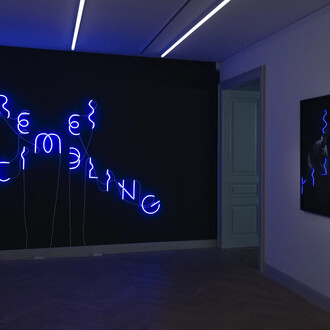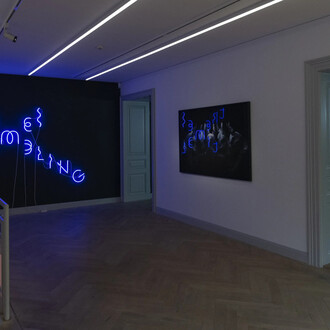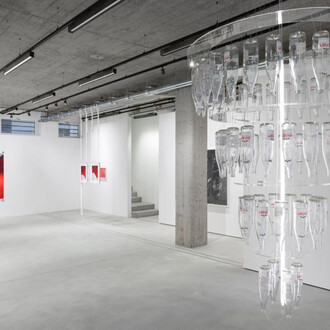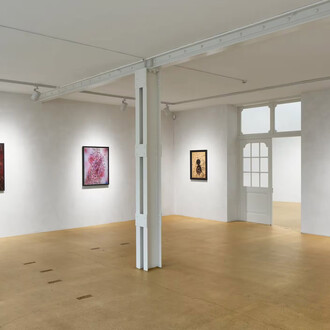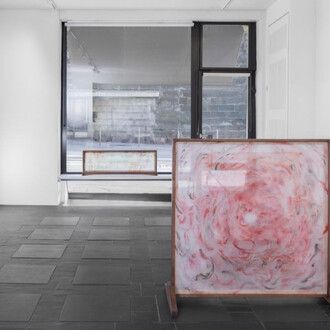Grieder Contemporary is pleased to present our exhibition Africa! with an overview of African artistic creations and aesthetics from traditional and contemporary artists. The Group show features a selection of artists from various sub-Saharan and West African countries and explores the incredibly rich and creative scenes present all over the continent.
By also including ancient and traditional artefacts from those regions the exhibition attempts to create a discussion between contemporary artworks and a different cultural aspect that preceded them, in order to display a historical context, not only initiating a debate between the different regions and cultures, but also stating the fantastic relevance of the works and their cultures from a philosophical, religious and anthropological viewpoint.
Joël Andrianomearisoa (*1977, Antananarivo, MG). Lives and works in Antananarivo, MG and Paris, FR. Andrianomearisoa studied at the Institut Métiers Arts Plastiques and received a diploma degree in architecture at Ecole Speciale d’Architecture in Paris 2003. Much of his work deals with the idea of duality such as light and dark or passion and fragility and he draws inspiration from the urban spaces he encounters. Andrianomearisoa is currently representing the Madagascar Pavilion at the Venice Biennale 2019.
Ifeoma U. Anyaeji (*1981, Benin City, NG). Lives and works in Nigeria. Ifeoma explores her boundaries as a female artist beyond the conventions of her academic training in painting. She also pursues her interest in sculpture and non-conventional art making by repurposing discarded objects such as plastic bags and bottles which are not biodegradable. Experimenting with these environmental pollutants she highlights our constant environmental problems and uses these unwanted materials in combination with traditional Nigerian crafting skills and techniques to create engaging and authentic art.
Omar Ba (*1977 Senegal). Lives and works in Geneva, CH, and Dakar, SN. Ba studied in Senegal and Switzerland and draws on past memories and present experiences of both cultures to create deeply personal and politically resonant works. His paintings fuse the figurative and decorative and depict partly real and imaginary worlds, drawing on both the African and European culture. Oma Ba is currently shown with a large solo show at the Montreal Museum of Fine Arts in Montreal, Canada.
Frédéric Bruly Bouabré (*1923 Ivory Coast, 2014 †). Bouabré is well known for his work “Alphabet Bété”, an Alphabet of over 440 pictograms of phonetic syllables showing and transmitting the knowledge of the Bété peoples. He also looks at, listens to, reads and archives the contemporary world like an entomologist. Traces of the real and spiritual world are recorded in hundreds of small drawings that have a postcard format using mostly ball point pen and coloured pencils. These drawings reflect his curiosity, his African heritage and his encyclopaedic ideal.
Romuald Hazoumè (*1962, Porto-Novo, BJ). Lives and works in Porto-Novo, BJ. Hazoumè’s art ranges from sculpture to photography, film and sound and confronts the complex realities of life in Benin and broader PanAfrican politics. He often uses recycled materials and a strategy of repetition and recombination to create potent works, intensified by the wordplay of his titles.
Januario Jano (*1979, Luanda, AO). Lives and works in Luanda, AO and London, GB. Jano completed his undergraduate degree at London Metropolitan University in London in 2005. He works in painting, installation, video, sculpture, photography and mixed media, exploring both traditional practices as well as modern pop culture.
His material choices define the outcome of the works both aesthetically and in terms of a narrative. The body plays a central role in his work, linking the present and past to build a historical narrative.
Abdoulaye Konaté (*1953 Diré, ML). Lives and works in Bamako, ML. Konaté primarily creates textile-based installations that explore socio-political as well as environmental issues. He explores the way societies and individuals in Mali and beyond have been affected by factors such as war, religion, globalisation and AIDS amongst other things. He creates large-scale abstract and figurative works referencing West-African traditions of using textiles as means of communication and commemoration.







